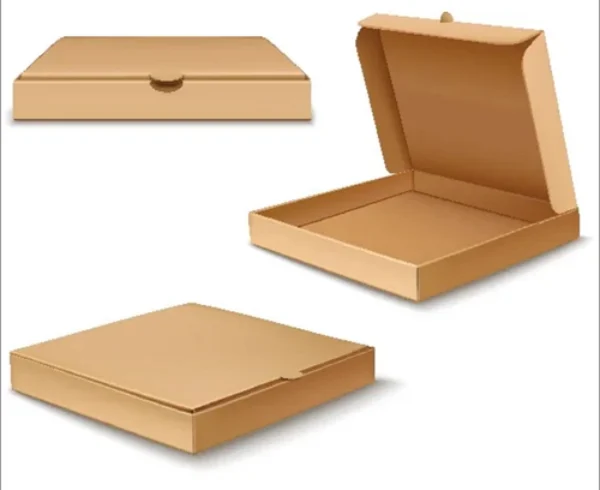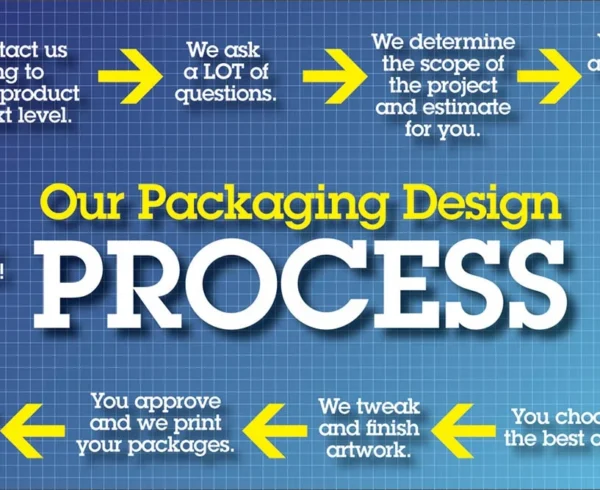Can you assist us in designing custom packaging solutions that reflect our brand and meet our needs?
Of course, I’d be happy to assist you in designing custom packaging solutions that reflect your brand and meet your needs. Packaging is an essential part of any product, and it plays a critical role in not only protecting your product but also creating a unique brand experience for your customers. Here are some steps we can take to design custom packaging that reflects your brand and meets your needs:
- Define your packaging needs: The first step is to identify your packaging needs. Consider the type of product you are selling, its shape, size, weight, fragility, and any other factors that may impact the packaging design. Also, consider your budget, production timeline, and any regulatory requirements that may impact the packaging design.
- Determine your brand messaging: Your packaging should convey your brand’s messaging and values. What is your brand identity? What do you want your packaging to say about your brand? Consider your brand’s color scheme, typography, and logo, and how these elements can be incorporated into the packaging design.
- Choose the right materials: The choice of materials is critical to the success of your packaging design. Consider the environmental impact of the materials and how they align with your brand values. Choose materials that are durable, protect your product, and are visually appealing. You may also want to consider using sustainable materials to differentiate your brand and appeal to eco-conscious consumers.
- Develop a prototype: Once you have identified your packaging needs, determined your brand messaging, and chosen the right materials, it’s time to develop a prototype. A prototype allows you to test the design and identify any issues before going into full-scale production. It’s essential to get feedback from your team, customers, and suppliers during the prototype phase to ensure that the packaging meets your needs and resonates with your target audience.
- Choose a reliable supplier: Finding the right supplier is crucial to the success of your packaging design. Look for a supplier with experience in producing custom packaging and who can meet your production needs. Also, consider their ability to provide support, such as design assistance, material sourcing, and logistics.
- Implement quality control: Once your packaging design is in production, it’s essential to implement quality control measures to ensure that the final product meets your specifications. This can include testing for durability, size, weight, and other factors that may impact the packaging’s performance. You should also consider implementing sustainability metrics to ensure that your packaging aligns with your brand’s environmental values.
How do you ensure the consistency and reliability of your manufacturing processes?
Ensuring the consistency and reliability of manufacturing processes is critical to producing high-quality products that meet customer expectations. Here are some key steps that manufacturers can take to ensure consistency and reliability in their manufacturing processes:
- Develop a standardized process: Standardization is key to consistency in manufacturing. Developing a standardized process involves defining the steps involved in producing a product and ensuring that each step is carried out consistently. This can be achieved through the development of standard operating procedures (SOPs) that provide clear instructions for each step of the process.
- Train employees: Employees play a crucial role in ensuring the consistency and reliability of manufacturing processes. Proper training is essential to ensuring that employees understand the standardized process and can carry out their tasks consistently. Manufacturers should provide regular training to employees to ensure that they are up-to-date on best practices and any changes to the process.
- Implement quality control measures: Quality control measures are designed to identify and eliminate defects in the manufacturing process. Quality control can involve visual inspections, statistical process control, or other methods of monitoring the manufacturing process. By implementing quality control measures, manufacturers can identify issues early and make corrections before products are shipped to customers.
- Use quality materials: The quality of the materials used in manufacturing can have a significant impact on the consistency and reliability of the process. Using high-quality materials can help to reduce defects and ensure that products meet customer expectations. Manufacturers should work with suppliers to ensure that they are using the best quality materials for their products.
- Invest in technology: Technology can play a critical role in ensuring the consistency and reliability of manufacturing processes. Automated systems can help to reduce human error and ensure that each step of the process is carried out consistently. Manufacturers should consider investing in technology that can help to streamline their processes and reduce the risk of defects.
- Monitor and analyze data: Monitoring and analyzing data can help manufacturers to identify trends and patterns in their manufacturing processes. By analyzing data, manufacturers can identify areas where improvements can be made and take corrective action to address any issues. Manufacturers should establish key performance indicators (KPIs) to track their manufacturing processes and use this data to make informed decisions.
- Continuously improve: Manufacturing processes are constantly evolving, and manufacturers must be willing to adapt and improve their processes to remain competitive. Continuous improvement involves identifying areas where processes can be improved and making changes to improve efficiency, reduce defects, and improve the overall quality of the product.








Leave a Comment